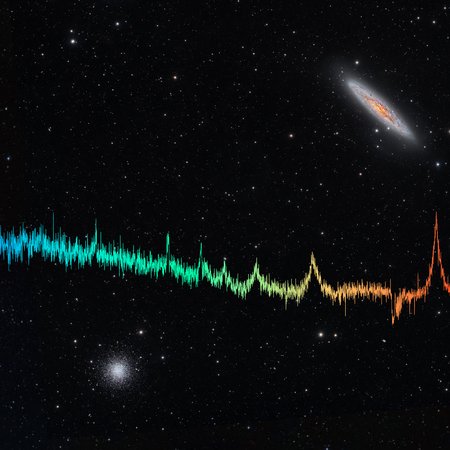1.69 billion stars

Gaia’s all-sky view of our Milky Way Galaxy and neighbouring galaxies, based on measurements of nearly 1.7 billion stars.
Credit: ESA/Gaia/DPACDerived from 22 months of observations, the much awaited second data release of the Gaia mission is now public. The Leibniz Institute for Astrophysics Potsdam (AIP) contributed to the common effort with software modules providing first look validation and background correction for the data of the radial velocity spectrometer. Additionally AIP is one of the official Gaia Partner Data Centres that host a mirror of the complete Gaia archive.
The second data release contains the position and brightness of 1 692 919 135 stars, as well as measurements of the parallax and proper motion of 1 331 909 727 stars. Parallax is a small motion in the apparent position of a star caused by the Earth's yearly orbit around the Sun and depends on its distance from us. Proper motion is caused by the movement of a star through the Galaxy.
The now published data release contains more astrometric information than any other catalogue and represents a huge leap forward with respect to the mission's first data release. For the first time, the Gaia catalogue also includes high accuracy three-band photometry, radial velocities and stellar atmospheric parameters. With this observational data the Gaia mission produces a precise 3D map of the Milky Way with positions and velocities.
“The AIP contributes to the Gaia data analysis with two software modules for the radial velocity spectrometer on board Gaia: a first look module for data verification and a module taking care of the background correction for the spectra” explains Katja Weingrill, Co-I of Gaia at AIP.“The first look software performs a daily data validation check. The background correction cleans the observed spectra from 'false' light arising from point sources and the diffuse background.”
The full Gaia data release 2 is available at https://gaia.aip.de. “Gaia will be a major leap forward in our understanding of the cosmos. There is hardly any field in astronomy that will not fundamentally change owing to this new Galactic census” says Matthias Steinmetz, PI of Gaia at the AIP. ”The Gaia data will also be correlated with the results by one of AIP's core projects, the RAVE Survey, which will allow an even more thorough determination of the properties and chemical compositions of the stars in this catalogue. RAVE will release its full data set in summer 2018”.
Gaia is a cornerstone mission in the science programme of the European Space Agency (ESA). Gaia was launched in December 2013 and arrived at its operating point, the second Lagrange point of the Sun-Earth-Moon system, a few weeks later. Gaia is measuring stars in our Milky Way and neighbouring galaxies at a level of accuracy never before achieved. The first data release was based on 14 months of data and listed positions of 1.1 billion stars, but only two million parallaxes and proper motions, and no photometry, radial velocities or stellar parameters.
Further information
ESA press release
Gaia media kit
Gaia data centre at AIP
Images
Gaia’s all-sky view of our Milky Way Galaxy and neighbouring galaxies, based on measurements of nearly 1.7 billion stars.
Big screen size [1000 x 500, 660 KB]
Original size [2000 x 1000, 2.9 MB]



